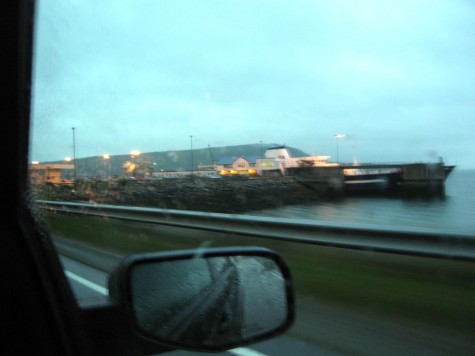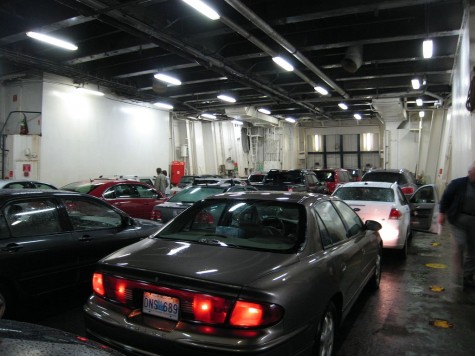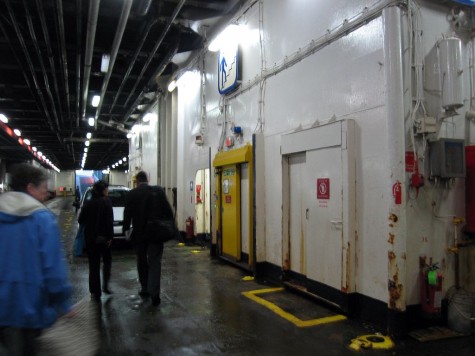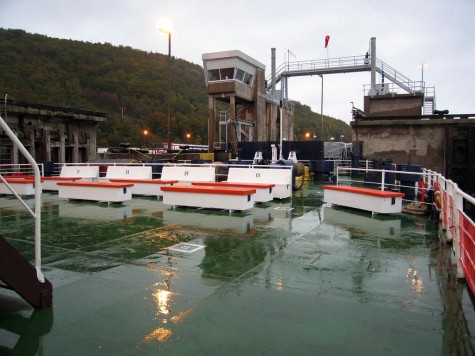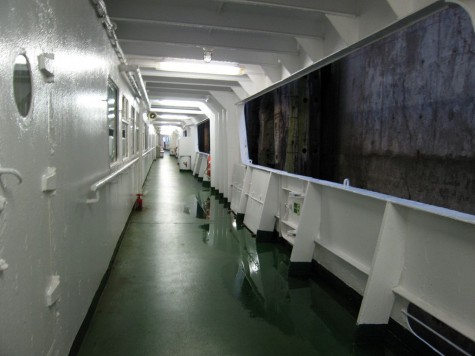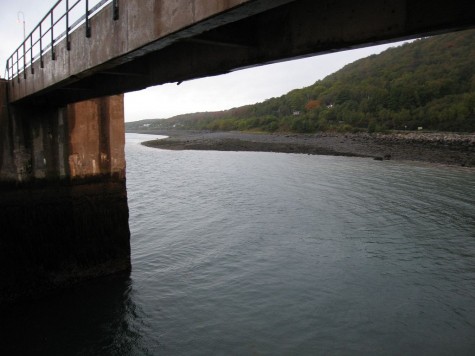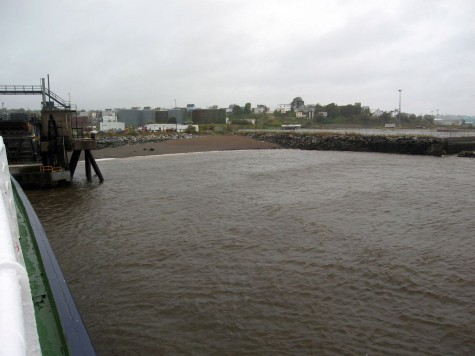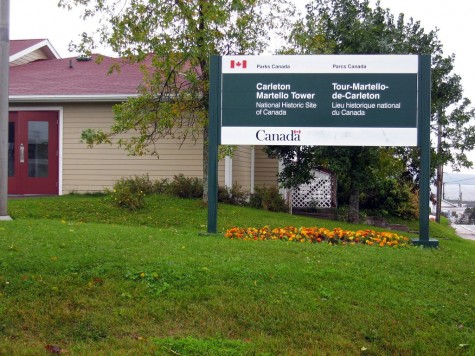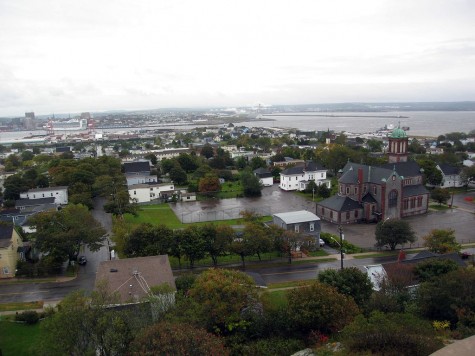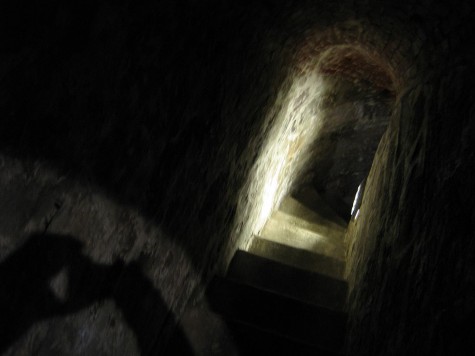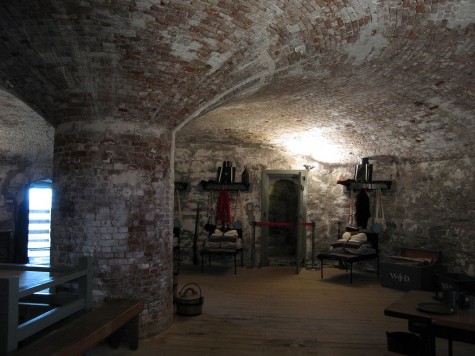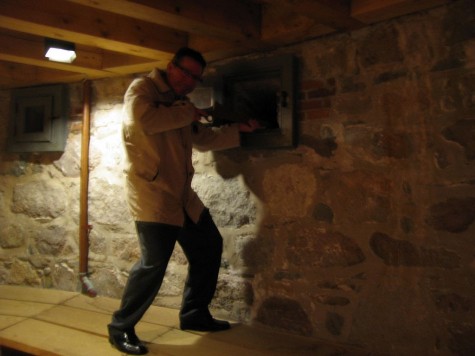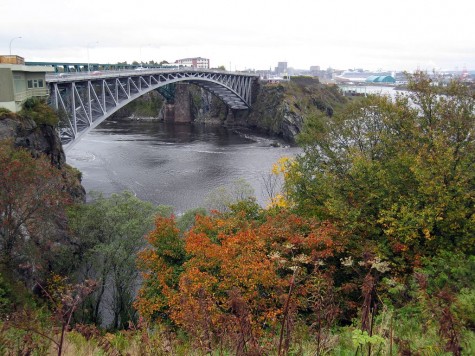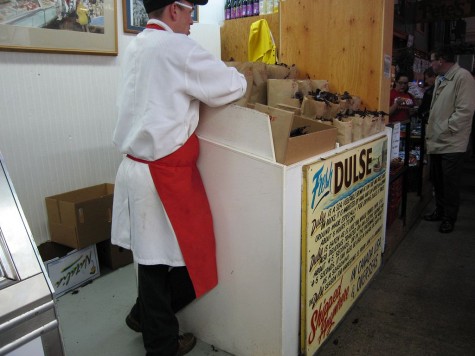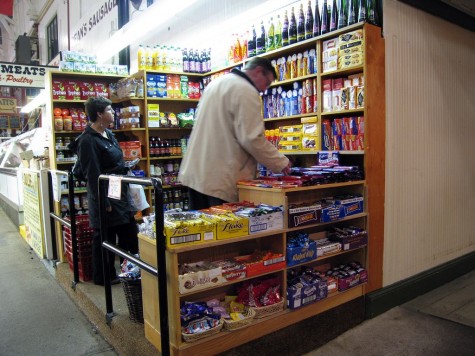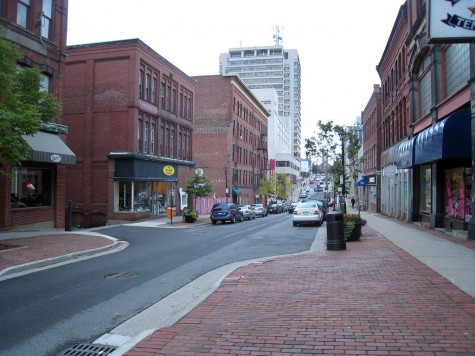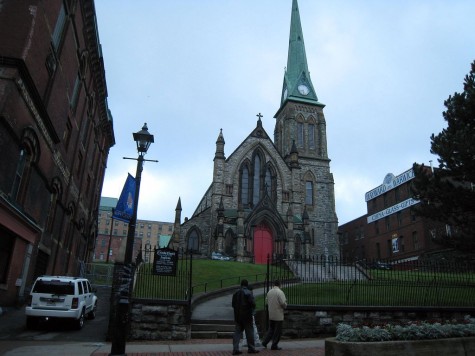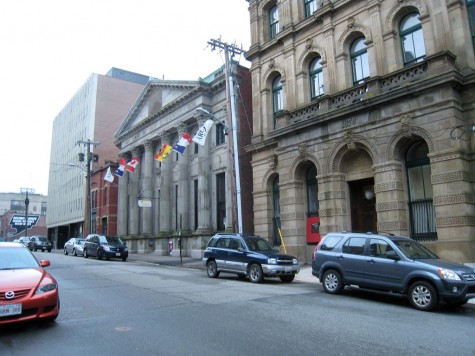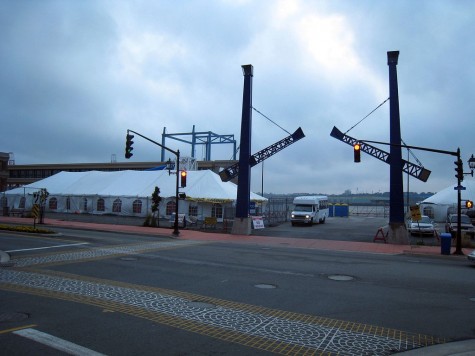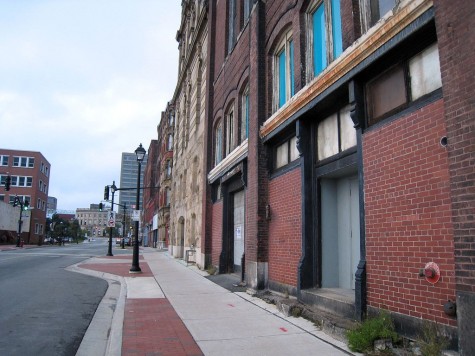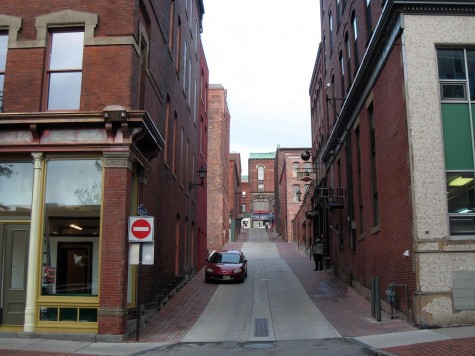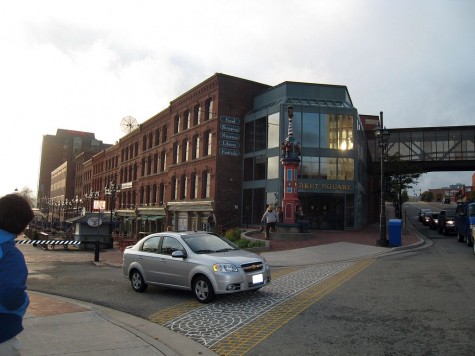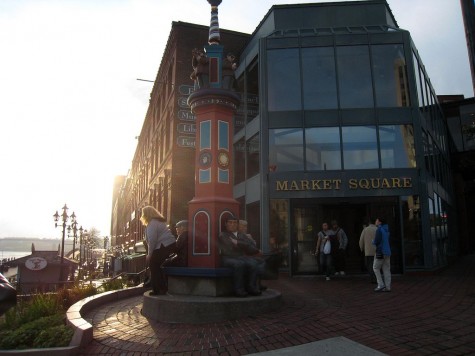On this rainy morning, Stephen dashed into the ferry office to buy a ticket. The other vehicles we already boarding the ferry, so we didn’t have to queue up on land.
Some flagmen guided our vehicle into place, and we parked.
Passengers are not permitted to remain down below in the vehicles. We took the stairs up.
I took a walk around the ship as it cast off. From the aft deck, we pulled away from the gangway.
I walked around the outer deck. Just casting off, we had not yet cleared the port walls.
A few minutes later, a more natural landscape became visible.
From the top deck forward, open water was to the west.
Looking east, a few minutes later, the Nova Scotia shore gradually fell away.
The ferry lounge is spacious. I sat by the window, and cleared a few e-mail messages over the wireless Internet. Geovanni, Nancy and Stephen chose to read, instead.
About 3 hours later, we arrived at the ferry dock in Saint John (not to be mistaken for St. John’s).
Looking off the starboard side, eastward, this ferry harbour isn’t very scenic.
Beyond the ferry harbour, the city centre is on another peninsula to the northeast.
Our meeting was scheduled a few hours away, in the city centre. To maximize our sightseeing time, we drove northwest, taking a scenic route uphill. We found ourselves by the Tower Hill Cemetery, with gravestones dating back to the 1850s.
Directly across the road from the cemetery is the Carleton Martello Tower. It’s a National Historic Site of Parks Canada.
We went inside for a quick look of the displays. After learning about 19th century defensive forts, we went outside to see the real thing.
We climbed the stairs up outside to the main floor. From there, we took an internal staircase up to the top.
The top level of the tower was used as a fire control post. This was not about controlling flames, but instead the correction of missiles trajectories from the land, targeted at ships at sea.
Looking out the windows to the north, the nearby neighbourhood is high ground for residential buildings. On the other side of the bay is the city centre of Saint John.
To the northeast is the terminal for ferries from Digby, where we had just arrived.
Looking southeast is Partridge Island, which has a history as a quarantine station back to 1785.
We took the stairs back down to the main floor.
The main floor housed the barracks, with cots laid out as they would have been in the 1800s.
The cannons would have been loud inside the barracks.
The soldiers may have been stationed at the tower for months, but mobility would have required each to store kits in the packs put on top the shelves overhead.
The fireplace would have been welcome in the cold Maritime winters.
Downstairs on the ground floor, the gunpowder was stored in a magazine.
The walls had loopholes — slits through which muskets could be shot. Stephen tried out the defensive position.
Leaving the tower, we took the long route into town, to stop by the world-famous Reversing Falls. They’re actually shallow rapids that change directions with the tides. We didn’t take the path from the lookout down to the shore.
We continued to the city centre. Our hotel was connected to the main shopping centre, Brunswick Square.
Navigating down a few levels, we walked through the maze of connecting halls to the City Market.
The Saint John City Market is the oldest continuously operating market in North America, first built in 1876. In addition to food vendors, there are food stalls.
One food that is truly local is dulse: a seaweed dried and packaged in paper bags for an easy snack.
The market has two aisles with stalls in the centre. Fruit is in abundance.
The floors in the market are gradually inclined. This view from the northeast side shows the view downward (towards the harbour).
This close to the sea, the fish market couldn’t have had a fresher selection.
Stephen picked up some gifts for the family from the British shop.
The towers in the city centre are connected by a network of indoor walkways. After our meeting, we decided to get a feel for the city outside. On Germain Street, the brick buildings are typical for the winter cold.
Trinity Anglican Church is prominent, and has a history back to the 1791.
We turned down Princess Street, to more brick warehouse-style buildings.
On Prince William Street, we saw the old Bank of New Brunswick building, which is now Le Faubourg, for the Association Régionale de la Communauté francophone de Saint Jean.
We continued walking down towards the waterfront. The Seaman’s Mission faces the port.
There weren’t any ships at the cruise port calling on Saint John that day.
Walking along Water Street, we saw the heritage of warehouses common of a port.
Walking away from the waterfront, our return took us along Prince Wales Street, which is mostly now office buildings, with a few restaurants.
The slope up from the waterfront is apparent on Grannan Street.
If we had chosen to take the indoor walkways from Brunswick Square towards the port, we would have gone through the Canada Permanent Building.
Market Square is a warehouse structure that has been converted into a community space and shops.
As the sun was setting, we decided to choose from the restaurants inside Market Square.
Visiting the Maritimes, we agred to sample the local seafood, and chose Grannan’s Seafood.
Stephen chose a dessert that was served with a flambé, so we got got a little show.
A relaxed dinner, good food, and great conversation. Business travel has its benefits.
We had started the day early in another province, and Atlantic Time is one hour earlier than home. The cool evening led us to wend our way back through the indoor walkways. We agreed to take a late start the next day, and meet in the morning for hotel checkout.

